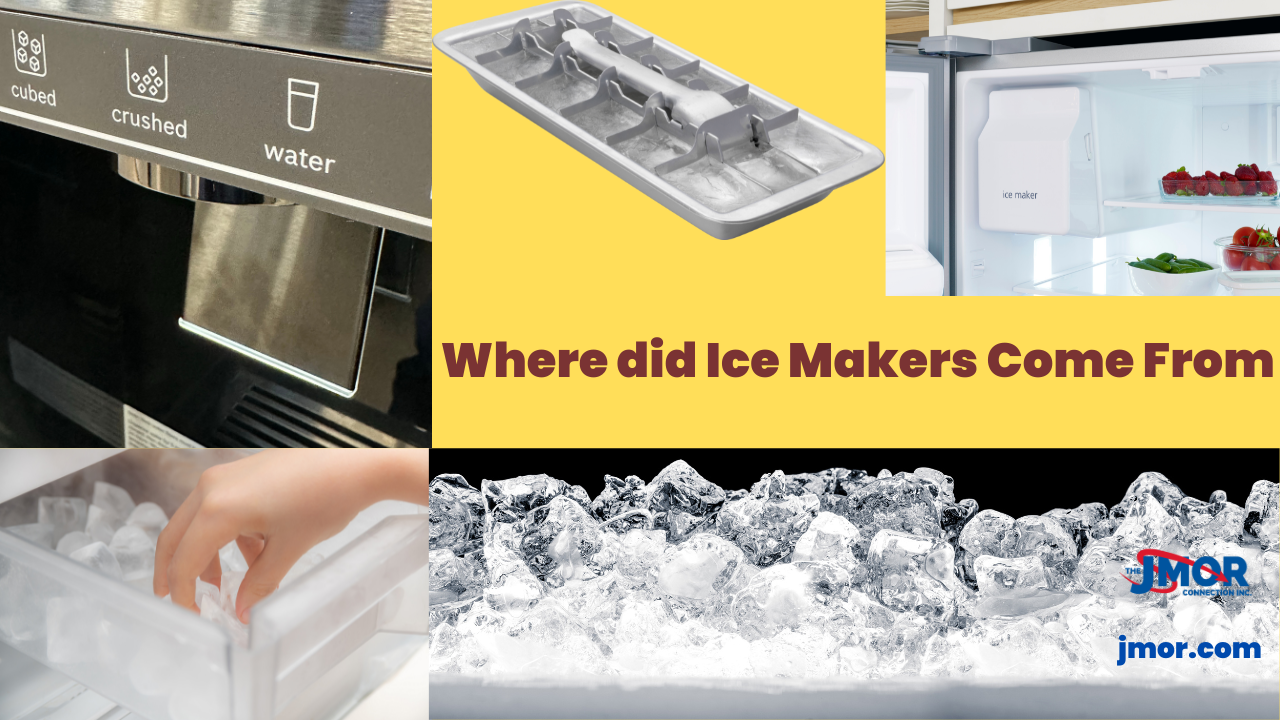Did you know that before modern refrigerators and freezers existed, there were various ways people made ice worldwide? Persians created a facility called a yakhchal, according to James Hilbish. This cone-shaped structure with a low pit was used to make and store ice as far back as 500 B.C. Many Egyptians set clay plots, filled them with water, and let them freeze on cold nights. People in other parts of the world naturally got ice from nature and often treacherous conditions risking their lives. Whether you walk into your kitchen or bar, many would want their ice automatically dispensed from the door instead of manually taking them out of a tray.
The demand for ice grew dramatically as more people realized it was necessary to keep food cold, prevent illness and preserve medicine. Also, many were developing a taste for cold sodas, drinks, and ice cream.
Dr. John Gorrie, in 1844 made the first refrigerator to make ice to cool the air for his yellow fever patients. Since his patients were receiving iced drinks, many believed he also invented the first ice tray. By the 1920s and 30s, many refrigerators came standard with a freezer section and compartment designed just for ice trays. Throughout this article, I will share how ice was made many years ago and today.
In 1928 two inventors, Thomas Midgley Jr, and Charles Franklin Kettering, created a freon chemical. Within a few years, Freon became the standard refrigerant as it eliminated many deaths by avoiding several toxic chemicals from years back.
When 1933 came about, the first stainless steel, the flexible all-metal tray, was invented by Guy Tinkham, the vice president of General Utilities Manufacturing Company. The tray operated by allowing one to pour water into the compartments of the tray. When the water turned to ice, it could be quickly released by twisting sideways and was called McCord ice tray, selling for about $.50 when they were introduced.
In 1853 Alexander Twining was awarded a U.S. Patent for developing the first commercial refrigeration system to produce ice cubes. With time McCord developed a variety of ice cube trays, such as aluminum trays, that contained a removable separator and release handle. However, it was not until about 1953 that the Servel company introduced an ice maker in the refrigerator in the freezer compartment.
By 1965, Frigidaire released a refrigerator/freezer where the ice maker was located in the door, which is now standard on many models seen today. With each decade, manufacturers were learning how to make a dichotomy of ice and ice-making machines. One of the original styles was ice-makers that made crescent shape ice. Next, scientists discovered how to create molds producing ice substantially smaller than traditional ice trays. Manufacturing started creating stand-alone ice-making machines like those in restaurants and bars. They also built smaller machines perfect for sitting on your counter or portable enough to take to parties and events when needed.
Technology in the ice-machine business grew to commercial machines building machines that could produce various ice-size cuts. These machines have a whole new set of applications, including unique ice cuts for storing meats, world produce shipping, concrete cooling, artificial snow for theme parks or sports events, freezing fresh vegetables, and freezing fish.
Now that we have learned how ice-making went from manual trays to automatic processes let us explore how they work. Today most ice-makers have an electric motor and automatic water value controlled by a circuit on the main board and a heating unit. If the refrigerator were pre-installed with an ice maker, you would hook the ice-maker supply line to your incoming water line.
However, if you are adding an ice maker to an ice-maker-ready refrigerator, there are a few more things you have to do. First, remove the EZ-Ice Cover with a flat-head screwdriver to expose the power and water supply line. Then you will need to remove the two plastic covers on the side of the freezer, remove the plastic rubber pieces on the shelf and take it out. Next, screw in the two hex bolts about halfway, as this will be where you will hang the ice maker. Install the leveling bracket under the ice maker, plug in the wire, and put the harness cover back on afterward. Also, ensure the tube sits right inside the water well on the right of the ice maker. Place the ice-maker over the hanging screws and screw in. and then use leveling bracket to level out the ice-maker. Then take the metal bracket and lower it and turn on the ice-maker.
When the temperature is approximately 0 degrees, the voltage will be sent to the water inlet valve to open and allow water to fill the ice maker’s tray, and the water starts to freeze. When the ice maker detects they are frozen, a heater loosens the ice, and they are then automatically ejected into a storage bin. The process continues until the ice reaches the level to push an arm up, thus shutting off the ice maker.
Did you ever take the time to think about all the effort it takes to make ice for you automatically? How about all the different types of ice shapes, sizes, and applications for which many ice makers are now used? Yes, how we make ice has changed, but the freezing process has not, making it possible to have ice at any time. Adding a few motors, innovation, heat, a water line, and luxury has become necessary in many people’s lives.
Check out more fantastic content at






